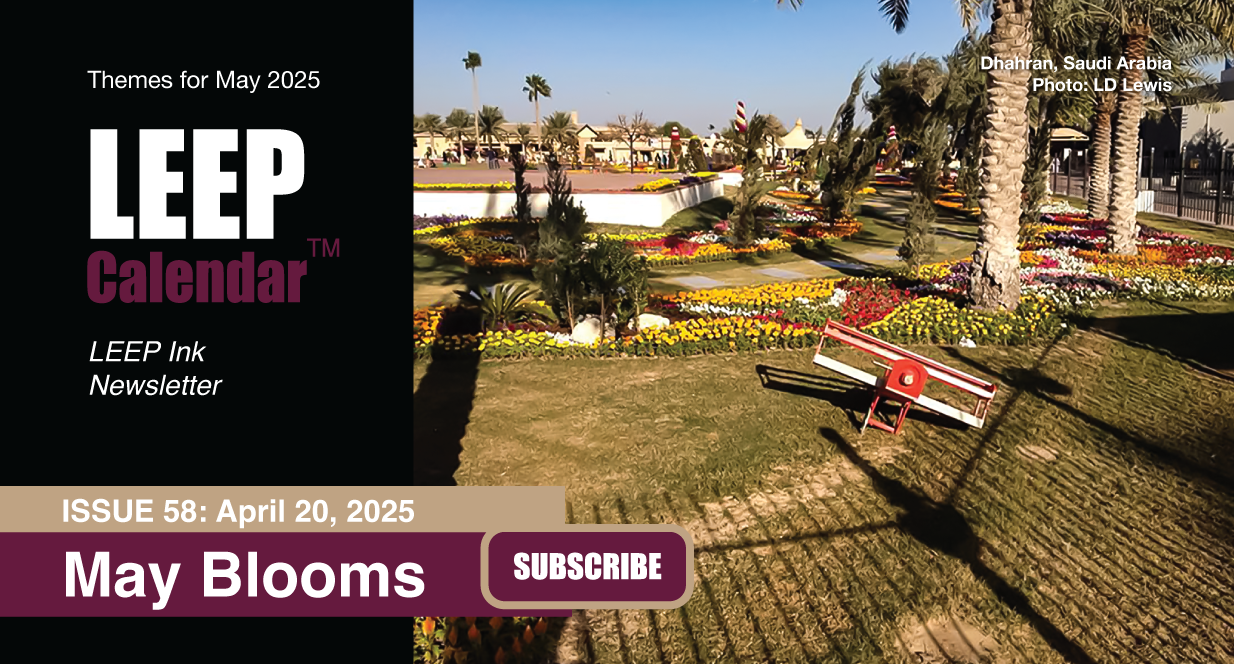 AD
AD
Today is: November 05
Scroll to explore events active on this date.
Additional Events on LEEP
LEEP INK FEATURES

August? Absolutely!
In August, we live through the Dog Days of Summer. It's hot and often humid, and those who can leave for better climates do. Down south, winter is in full force. August is also known as "the ...

In The Heat of July: July 2025 Events
Is it hot enough (or cold enough if you're below the equator) for you yet? There is actually a day for that! Like every month, I pick a diverse collection of events you may or may not know about. This ...

May Blooms: Events in May 2025
Along with October, May is one of the most densely packed months of the year. It's before the summer humidity and the last whole month of the school year. The weather is warming in t...
About the Annexation and Occupation of Western Sahara by Morocco
Politics , Civil Rights
Africa
Ends: Nov 14, 2024
DESCRIPTION:
November 14, 1975, Spanish (Western) Sahara, Spain, Morocco, and Mauritania signed the Madrid Accords, leading to the annexation of Western Sahara by Morocco, ushering in the last colonization on the continent of Africa. On February 27, 1976, Spain officially departed Western Sahara.
Western Sahara is on the Northwestern coast of Africa, south of Morocco, and north and west of Mauritania. It is home to approximately 600,000 people. Many people are aware of the occupation of Palestine. Yet, few are aware of an equally brutal occupation currently occurring in Western Sahara, which, like Palestine, is protected diplomatically by the United States government and its allies.
Both situations have many similarities, including walls built to keep people in or out. Western Sahara boasts the world's most extensive active minefield, laid at the base of its 2,700 km wall. Its wall, manned by Moroccan troops, is four times longer than Israel's and twelve times the size of the former Berlin Wall.
Both territories were previously under European colonial rule and primarily given over by their European colonizers to the current occupiers: Palestine from Britain and Western Sahara from Spain. In both cases, Morocco and Israel annexed the land and labeled it "disputed." Under international law, in both cases, the land is occupied.
Like Palestine, Western Sahara media, social media, and freedom of expression are heavily monitored and swiftly punished by the occupier should they stray from the accepted narrative. Intimidation in West Sahara is met via beatings, disappearances, threats, imprisonment, monitoring, and restrictions on movement. In both cases, the people seek fundamental human rights and self-determination; in each case, the occupations have been going on for decades.
West Sahara was the actual starting point of the Arab Spring, well before Mohamed Bouazizi self-immolated in Tunisia in December 2011. In the fall of 2010, the indigenous Saharawi people began demonstrating against the occupying Moroccan authorities. They built a tent city on the outskirts of Laayoune. Though the protest was peaceful and included thousands of men, women, and children, the Moroccan authorities razed the camp by fire and other means on November 8, 2010.
https://www.reuters.com/article/us-morocc0-sahara-protest/western-sahara-protest-camp-tests-moroccos...
The occupation continues to this day.
What you can do:
Democracy Now's one-hour special on the situation in Western Sahara was broadcast on August 31, 2018. Mark this anniversary by learning about this situation, which continues to be unknown to most people in the Western world.
VIDEOS
SUPPORTING DOCUMENTS
Currently, this event does not have supporting documents.
ADDITIONAL IMAGES
Currently, this event does not have supporting images.
Where would you like to go now?
 AD
AD


/footer-logo.svg)
